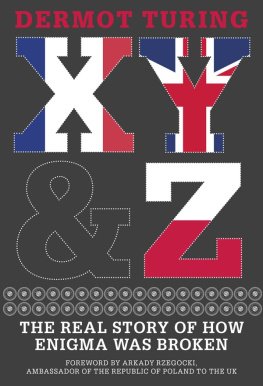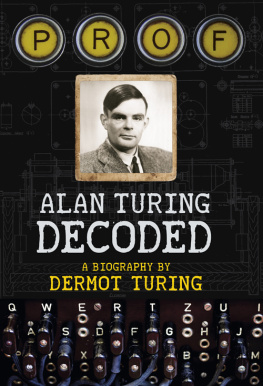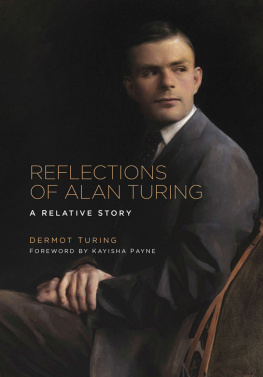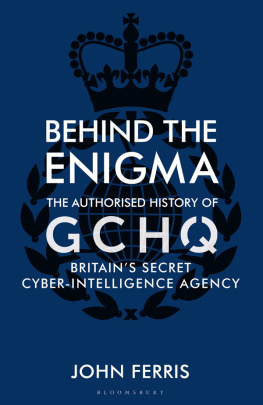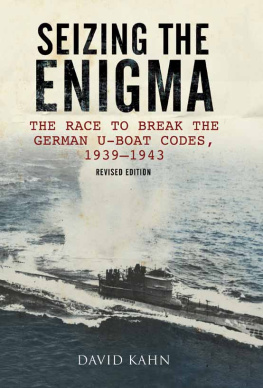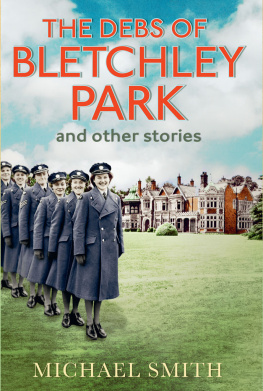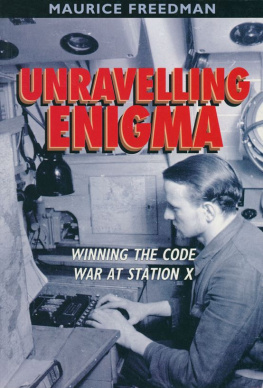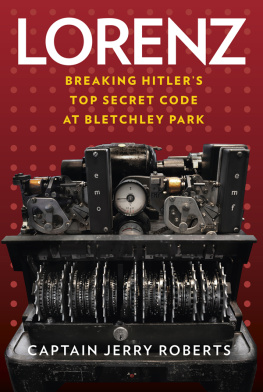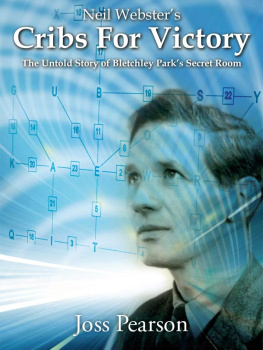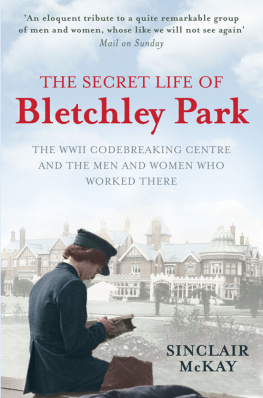Contents
Guide


La collaboration avec le Service britannique na pas cess pendant toute la guerre et de la faon la plus intime qui se puisse rver. Gustave Bertrand, report of 1 December 1949
[Collaboration with the British Service continued uninterrupted for the whole war, and in the closest manner imaginable.]
First published 2018
The History Press
The Mill, Brimscombe Port
Stroud, Gloucestershire, gl5 2qg
www.thehistorypress.co.uk
Dermot Turing, 2018
The right of Dermot Turing to be identified as the Author of this work has been asserted in accordance with the Copyright, Designs and Patents Act 1988.
All rights reserved. No part of this book may be reprinted or reproduced or utilised in any form or by any electronic, mechanical or other means, now known or hereafter invented, including photocopying and recording, or in any information storage or retrieval system, without the permission in writing from the Publishers.
British Library Cataloguing in Publication Data.
A catalogue record for this book is available from the British Library.
ISBN 978-0-75098-967-1
Typesetting and origination by The History Press
Printed and bound in Great Britain by TJ International Ltd
eBook converted by Geethik Technologies
CONTENTS
LIST OF MAPS
Foreword
By H.E. Prof Dr Arkady Rzegocki, Ambassador of the Republic of Poland to the United Kingdom
On 23 March 2018 I was pleased to be the guest of honour at Bletchley Park, where H.R.H. the Duke of Kent ceremonially opened a new permanent exhibition called The Bombe Breakthrough, which explains how messages encrypted on the Enigma cipher machine were broken using novel machine techniques. The exhibition describes not only the work done at Bletchley Park itself, but also the foundations laid in Poland before the start of World War Two. The Polish Embassy contributed a full-scale replica of the Polish bomba machine, illustrating that the development of machines for code-breaking began in Poland.
The fact that the Enigma code was broken is now well known in both Britain and Poland, but what people know is surprisingly different in the two countries. In Britain, the story is about the achievements of Bletchley Park, centred on the work of Alan Turing, and how the decryption of Enigma messages helped the Allies to victory and shortened World War Two by as much as two years. In Poland, however, the story is about the triumph of mathematicians, especially Marian Rejewski, Jerzy Ryicki and Henryk Zygalski, who achieved the crucial breakthroughs from 1932 onwards, beating their allies to the goal of solving Enigma, and selflessly handing over their secret knowledge to Britain and France. It is the story of a relay race, with the baton changing hands at crucial moments. When America entered the war, the Enigma secrets were once again passed on. All the countries involved have much to be proud of, and the Enigma story deserves to be told from all the viewpoints. This book will help ensure that the achievements of the Polish code-breakers are better understood in Britain. But there is a wider significance than balancing the narrative. At the heart of the success against Enigma, and its contribution to the outcome of World War Two, was international cooperation in the field of intelligence. Poland, France and Britain (and, later, the United States) were partners in an intelligence-sharing network, contributing knowledge from various sources towards a common goal. The spirit underlying the Enigma relay race remains relevant, with intelligence cooperation continuing to be a matter of vital importance in the face of more modern threats to security. It is in that spirit the Polish Embassy has supported the exhibition about Enigma code-breaking at Bletchley Park.
Meanwhile, the dramatic story of the Polish code-breakers and their colleagues, and what became of them, is set out here. I hope you enjoy this fascinating book written by Sir Dermot Turing, the nephew of Alan Turing. Sir Dermot has, for a number of years now, cooperated closely with the Polish Embassy, historians and academics to tell the true story behind these crucial events, that shaped our modern history. I am very grateful that this story has been told from both sides. It is key to a better understanding of our common history.
Arkady Rzegocki
The Embassy of the Republic of Poland
47 Portland Place
London W1B 1JH
DRAMATIS PERSONAE
Polish

The Other Exiles

The Wider Picture

The French
The Service de Renseignements

The British

World War Twos greatest spy

Pronunciation
Despite the grumbles of English speakers, Polish is largely phonetic, and strings of consonants are not so daunting once the principles are mastered. The emphasis is almost always placed on the penultimate syllable.
c | ts, as in hats, unless followed by i, when it is softened as in chip |
ch | soft ch, as in Bach |
, | cz hard ch, as in chop |
dz | j or ge, as in judge |
en, as in penguin |
j | y, as in yes |
w, as in how |
as in the Spanish maana, or ni in onion |
oo, as in hood |
, sz | soft sh, as in shot; s followed by i is also softened |
w | v, as in van |
rz, | soft z, like the s in pleasure; z followed by i is also softened |
TIMELINE




